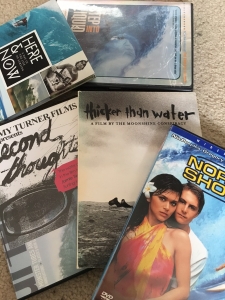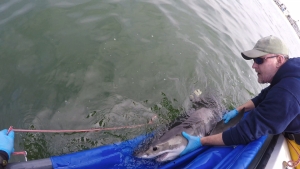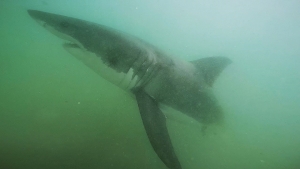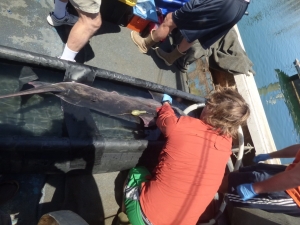Seven Things That Will Help You Embrace Your Inner Surf Geek
In the days of old, the word “geek” hardly applied to the buff, bronzed and bitchin’ club that are surfers. However, thanks to many technological advancements, the surf community can now officially “geek out” with the rest of ’em.
Need a jumping off point? Here are seven items that will send you down the rabbit hole to geekdom–pocket protectors not included:
1. Join World Surf League’s Fantasy Surfer Create or join the wide-world of fantasy surf leagues.
This is where your supposed ‘extensive knowledge’ on the pro scene shows–so put up or shut up! Stuck behind a desk and several computer monitors all day? Put your browser on ‘in cognito’ mode and join, if you dare. If you have fellow aqua-junkie co-workers, start a private league and feel the froth on a daily, hourly and/or heat-by-heat basis. Wage wars, place bets, discuss Adriano’s board dims and the swell direction while sacrificing a proverbial goat to the WSL gods to dominate your league. The ultimate surf geek knows his shit in this arena–between wildcards, player injuries, swell angles and board shapes, there are so many factors to consider, besides, oh yea, WORK.
May the odds ever be in your favor.
2. Stalk Swell Charts
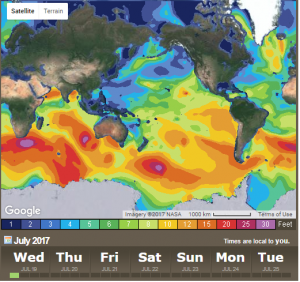 …And swell angles for days. Swell direction and angles are tricky to decipher and when you throw bathymetry into the mix, uncovering that secret spot’s epic days can become an exact science. It takes some research, a little trial-and-error and patience. If you reeeeeally want to geek out, sign up for an oceanography course at your local community college. Soon you will be speaking in educated surfer tongues to your buddies in the lineup, muttering phrases like “It’s all about the 270 degrees out of the west, but only if there is a deep high tide that peaks at 12:51pm…” If they don’t realize it at first, they will soon understand that you are, indeed, actually SANE once that sneaker canyon set pops up at Blacks and all but you were caught inside.
…And swell angles for days. Swell direction and angles are tricky to decipher and when you throw bathymetry into the mix, uncovering that secret spot’s epic days can become an exact science. It takes some research, a little trial-and-error and patience. If you reeeeeally want to geek out, sign up for an oceanography course at your local community college. Soon you will be speaking in educated surfer tongues to your buddies in the lineup, muttering phrases like “It’s all about the 270 degrees out of the west, but only if there is a deep high tide that peaks at 12:51pm…” If they don’t realize it at first, they will soon understand that you are, indeed, actually SANE once that sneaker canyon set pops up at Blacks and all but you were caught inside.
Here are some great resources to get ya started:
Begin with Bruce Brown’s cult classic film “The Endless Summer” or the 1987 favorite “North Shore” where Arizona wave pool surfer Rick Kane becomes a Hawaiian Pipe pro in the less than a month.
Enter: bottomless chasm of surf flicks
To state the obvious: your tastes largely depend on what you enjoy doing in the water. It’s a right of passage if you can stomach Hollywood’s damning stereotypes, too. From the 1960’s classic films to a generation defined by the movie “Momentum,” to hippie-esque Moonshine Conspiracy works like “Thicker Than Water,” to Dane Reynold’s abstract artsy fartsy films like “Modern Collective,” among many MANY other nitty gritty Volcom surf punk flicks that play on repeat at your local bars and surf shops–You can spend a good chunk of your life staring at backside hacks on slo-mo, if you haven’t already. YouTube is also another great resource to hunt for sick clips.
Just don’t forget to score some real tubes.
Pick up a wha-? Before you send smoke signals out of your ears, relax. This is not your 9th grade English/Lit class. These are stories that you will actually enjoy reading and, maybe, recommend to your guys or gals. Once I picked up a surf book, they were very hard to put down…I’ve never been a very passionate reader, but this genre hit a major nerve. The next thing I knew, I had a bookshelf comprised of novels aside from the garden variety of dusty Victorian literature that served as my doorstop/natural sleep aid in college.
Shortly after this discovery, my college essays became very interesting, I took a script writing class and excelled–And! Books in general became more enjoyable….even those Victorian snooze aids.
A few recommends, on my behalf:
- The Lost Coast
- In Search of Captain Zero
- Caught Inside: A Surfer’s Year on the California Coast
- Pipe Dreams: A Surfer’s Journey
- Fearless: The Story of Lisa Anderson
5. Read Surfer Comic Books & Social Media
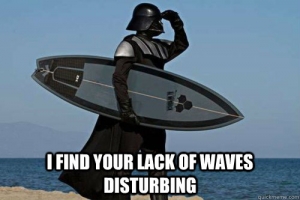 YES–they exist. As if a surfer’s life couldn’t be more customized according to this aqua obsession, we also have comics for surfers. If you’ve ever picked up a Surfer Mag between 1986 and 2006, you would have seen Wilbur Kookmeyer, an infamous blonde-haired buck-toothed boy kooking out via comic strip form. If comic books are your bag, start collecting Surfer Mags and watch Wilbur Kookmeyer’s wacky adventures unfold.
YES–they exist. As if a surfer’s life couldn’t be more customized according to this aqua obsession, we also have comics for surfers. If you’ve ever picked up a Surfer Mag between 1986 and 2006, you would have seen Wilbur Kookmeyer, an infamous blonde-haired buck-toothed boy kooking out via comic strip form. If comic books are your bag, start collecting Surfer Mags and watch Wilbur Kookmeyer’s wacky adventures unfold.
Memes are also not too far off from being sometimes hilarious.
AND! Robin Lanei, a really rad artist gal, is a must to follow on Insta. Her art’s messages will often leave me in stitches on a daily. Follow her: @robinlanei_art
6. Attend A ‘Boardroom’ Show
Want to talk for hours to the professionals behind the board logos? Chat with those who have been working the foam and resin for the past decade about your

thoughts on single fin/quad setups, how hand-shaping boards is a dying art (‘merica!), the evolution of the thruster, foam density, tails, that lingering 1/8 of an inch that gave you wobbles down the face of that one wave on that epic day…you get the drift. Canoodle with some pros and high profile shapers, like Al Merrick and those crazies at …Lost. If you are a board shaping connoisseur, this is your Comic-Con.
Go forth, my surf geeks and let your froth be steady and right!
7. Get a Wetsuit for Every Water Temp
You would have absolutely no excuse to ever be out of the water, unless there was some kind of sewage spill or shark sighting. Even then, I’ve seen surfers chill in the lineup at Uppers while a 12-foot grey-suited landlord breaches right in front of the lot or score a filthy looking barrel at Newport’s River Jetties right after a rain–and I’m talking about brownish barrel cover-ups. YUCK. It’s your choice to bathe in hydrogen peroxide or surf with a steel cage. Although shark attacks are extremely rare (see my previous article), MRSA ain’t. Save the “filthy” verbiage for barrel exaggerations.
All two real excuses aside, no matter the condition, you are out there in the water–well-suited and ready to catch waves or shake hands with aforementioned landlord before he collects rent. There are suits for all shapes, sizes, budgets, and creative requirements. You can geek out for days Japanese rubber or laugh hysterically at the latest literal version of a wetSUIT and it’s price tag–> (see: Thom Browne’s $3,900 designer wetsuit ).
From a cool summer breeze fit for a wetsuit top to trekking through snowfall in your 6 mil, Vaseline covering your face…you come prepared.


